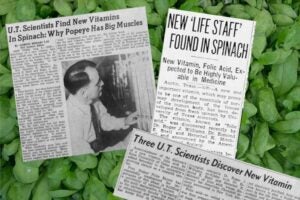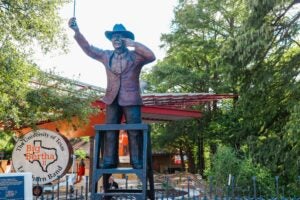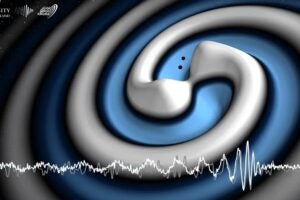The replica is made by putting a soft latex jacket around fossilized pieces to make a mold. The mold is later filled with epoxy or fiberglass. The first cast of the piece of fossil becomes the master cast and is saved, because it will last longer than the mold.
“For pieces (of the skeleton) that might be missing or that you have to scale to size to match the other pieces, you actually sculpt in some way, generally out of clay,” Theriot said. He said the resulting pieces “are really quite light.”
The pterosaur’s actual remains are housed at the Texas Memorial Museum for research, and only rarely displayed. Real bits of bone remain as part of the fossil, but are extremely delicate.
The museum has a collection of more than 5 million objects from firearms to fossils, nearly all from the Texas area. These objects include 210,000 vertebrate paleontology fossils from across the state as well as 3.8 million gems, minerals, nonvertebrate and geology specimens. The museum is open from 9 a.m. to 5 p.m. Monday through Friday, from 10 a.m. to 5 p.m. Saturday, and from 1 p.m. to 5 p.m. on Sunday. Admission is free.
NOTE: For additional information and to arrange press viewings of the pterosaur display, contact Dr. Edward C. Theriot (512) 232-2379. E-mail: etheriot@mail.utexas.edu The press also may make arrangements to attend a private reception to inaugurate the pterosaur exhibit and celebrate the museum’s 60th birthday at 2 p.m. Sunday (August 29) at 2400 Trinity by calling the Texas Memorial Museum at (512) 232 5504.



